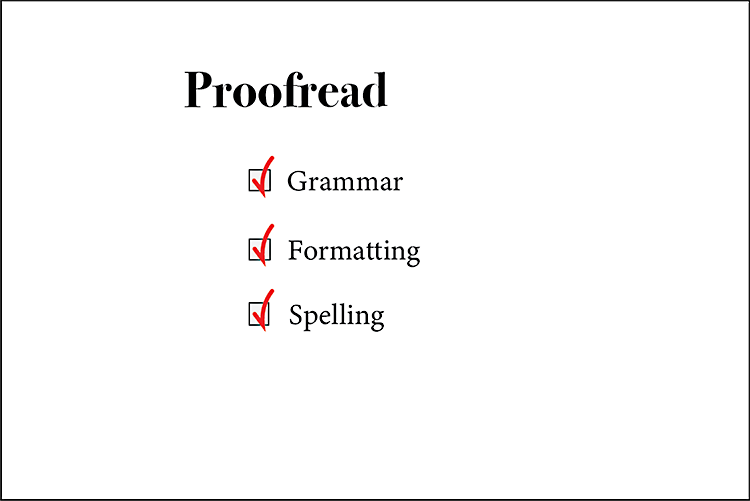The topic of copyediting is talked about at length within the publishing industry, but there is little discussion about another aspect of the editorial process that is equally as important: proofreading. Here is a quick guide to everything you need to know about proofreading your next project.
Proofreading is one of the last steps in the editorial process. The manuscript has completed all rounds of copyediting, has been XML typecoded, and has been sent to the designer to complete the interior. The book is nearly complete and just needs a final check to ensure that errors weren’t introduced during the design process and that there are no lingering grammatical errors. Proofreading is the final step before the book is sent to the printer, but there is much confusion about what is and is not covered during this stage of editing.
Here are some things to look for as you complete your next proofread:
Weird Spacing:
Be on the lookout for missing spaces between words or punctuation and places where there are additional spaces where there shouldn’t be.
Leftover XML Coding:
At Ooligan, our books are XML typecoded so that the designer knows what special treatment different words and sections should have. Sometimes parts of this code accidentally make its way into the final manuscript, so be on the lookout for erroneous code.
Discrepancies:
Double-check that everything from the final version of the manuscript has been included in the designed version. Check for missing paragraphs or words, missing images or graphics, or missing punctuation marks.
Punctuation:
As you are proofreading, check the punctuation surrounding words that are in bold or italics—do they follow the guidelines outlined in your style guide? Also be on the lookout for placement of punctuation within quotations—do they follow the guidelines outlined in your style guide?
Closed vs. Open Compounds:
Make sure that compounds are following the Hyphenation Guide for Chicago.
Consistent Spelling:
Be on the lookout for names, places, and other words that may be spelled inconsistently throughout the manuscript. We recommend keeping the style sheet for the book nearby as you proofread.
Ellipses:
Double-check that all ellipses are formatted according to the style guide. For Chicago, it is three periods with spaces: . . .
Windows, Runts, and Orphans:
Be mindful of the way paragraphs start and end. Widows happen when the last line of a paragraph starts at the top of the next page. Runts occur when the last line of a paragraph ends with a single word. Orphans happen when the first line of a paragraph is on the bottom of a page.
Here are some things to keep in mind when completing a proofread. The time for any substantial editing is over. Now is the time to look for any glaring errors that are remaining after the copyedits are completed. We don’t want to be rewriting any of the text or posing queries to the author—there shouldn’t be any substantial changes to the manuscript at this stage.
I hope this guide helped shed some light on what is expected—and what to avoid—for your next proofread.
Happy proofreading!

